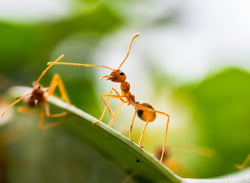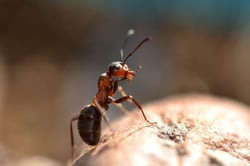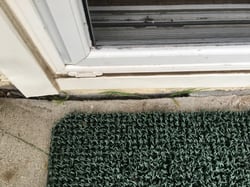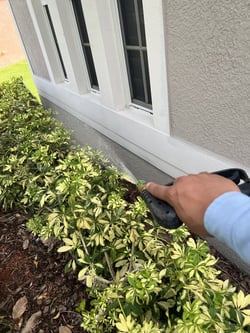Ants are a common household pest that requires routine prevention and management to keep them at bay. Considered to be one of the most resilient pests homeowners can encounter, these tiny intruders can cause big headaches. With the ability to appear practically out of nowhere, you may find that one day your home is pest-free, while the next, it is infested with ants. It can happen so quickly and without warning that you’re left to sit back and wonder: where did they even come from?

What are sugar ants?
Before tackling where ants come from, it’s important to understand the types of ants that you may encounter in your home. Ants are an incredibly abundant species of pest, and there are several ant species that you may have to contend with. Knowing what kind of ants are present in your home is crucial to their successful removal.
First, we must address the #1 culprit of ants in the home: the sugar ant. At least, that’s what you might think it is.
“Sugar ant” is actually just a universally adopted term for homeowners who experience ants in their homes. The real sugar ant actually resides in Australia and probably isn’t the true culprit for creepy crawlies in your American kitchen. Instead, you may be experiencing the infiltration of a number of different ants, most of which seem to be attracted to sugary foods. Many of these ants look very similar in size, color, and shape, making identifying them surprisingly difficult for the average person. With over 10,000 varieties of ant, it’s no wonder homeowners have opted for a catch-all term that best describes their problem pest!
There are a few common ants that many homeowners will encounter at some point in their lives. This includes odorous house ants, minuscule black or brown ants that are attracted to moisture. Odorous house ants, as their name suggests, emit a unique, rotten coconut-like (some say sweet!) smell when they are stepped on or squished. Though they don’t directly pose a health risk to homeowners, they can quickly contaminate food supplies and also happen to be the #1 ant problem in the Northeast. They are also the ant most commonly dubbed a "sugar ant" by homeowners due to their similar characteristics, despite being smaller and uniquely aromatic.
Another frequently found ant includes the pharaoh ant, which is best known for its inconspicuous small size and resistance to removal efforts. Yellow in color, these ants are attracted to food, sweets, and even other dead insects. Unlike the odorous house ant, pharaoh ants can easily spread disease and cause significant health issues to humans.
Still, there are pavement ants, who generally prefer to live outside near sidewalks, but occasionally wander inside in search of food. Pavement ants are typically larger, brown or black insects and are regarded as a difficult population to control, especially when mating. In addition, pavement ants have been known to sting when they perceive a threat.
Because most ants tend to look similar, it often requires a pest control professional to properly identify the ant and therefore effectively treat an ant problem. Consider contacting a reputable pest control service like EcoShield for help in identifying and eradicating ants.

Why are there ants in my home?
If you’re having an ant problem in your home, it’s important to know what attracts them. Sugar ants are first and foremost interested in sweet and sugary foods that are typically kept in kitchens. They often convene around unnoticed spills, sticky countertops, or dropped treats on the floor. Sugar ants will also sneak into closed cabinets or cupboards in search of hidden-away sweets, searching for any small cracks and crevices to enter through. This is why even the most vigilantly cleaned kitchens can still encounter ant infestations, despite taking proper precautions such as:
- Monitoring and cleaning pet food bowls
- Making sure there are no crumbs under the kitchen table
- Cleaning up spilled food or drinks
- Keeping lids on trash cans
- Making sure over ripe fruit is not left out on the counter
- Not leaving dirty plates stacked in the sink or left out on the counter
- Properly sealing sealed containers of food in your cabinets and pantry
- Not having dripping faucets or leaky sink pipes
- Keeping garbage cans clean from leftover residue
- Checking to ensure there are no cracks or little openings around the foundation of your home
It can be especially difficult for homeowners with children or pets to keep ants at bay. Frequent spills or small messes act as beacons to sugar ants. While routine cleaning attempts can sometimes be effective, it should be understood that ants can be an incredibly challenging pest to rid yourself of completely. They are remarkably resilient and can make themselves at home virtually anywhere.
Prevention is usually much easier and more manageable than attempting to treat an infestation. If you’ve experienced ant problems in the past or are concerned that your home may be at risk, contact EcoShield for an inspection and front-line treatment plan. Protecting yourself prior to ants becoming a problem is the single best way to avoid ants altogether. Our year-round Shield Protection Plan can also prevent and control ants before they become a problem.
Where are the ants coming from?
And now for the most pressing question of all: where are all these ants coming from in the first place? The obvious answer is: well, from outside, of course! It may come as no surprise that many of the ants you’re encountering in your home have made their way in from the outside. Though this is true, it doesn’t exactly answer the how. How are the ants getting in?
Unfortunately, ants can make their way into your home through a variety of pathways due to their resilience and itty bitty size. Where there is a will, there’s a way, and ants have nothing if not willpower! Any small crack or crevice in the exterior of your home that connects to your home’s interior is a potential entry point for ants. Because ants require very little space to travel through, ant entry points are often easily overlooked and difficult to locate. The following are some common entry points for ants:
- Gaps and cracks where utility pipes or wires connect to your home
- Holes in window or door screens
- Gaps in window or door frames
- Damaged or nonexistent weatherstripping
- Cracks in your home’s foundation or siding
- Exterior ventilation units
If you’re already experiencing a problem with ants in your home, there’s a strong possibility that some of them aren’t making their way indoors at all but are rather being born right in your home! Existing ant colonies may build nests and hatch eggs in your home, creating a whole generation of ants that are born tenants of your house. This is often the case in instances of true infestation. It can also make removal and prevention incredibly difficult, especially for those attempting to DIY their way out of being overrun by ants.

How can I get rid of ants in my home?
While you may want to try DIY solutions before calling in a professional, it’s important to understand the nature of an ant infestation. The life of a worker ant revolves solely around protecting the colony and finding food. These are the ants that you’re likely to spot on your countertops or climbing up the wall in your kitchen – but they only represent a small percentage of the total colony.
Spot-treatments, sprays, and baits can be effective at stopping the ant activity you see in your home, but the nest with the rest of the colony may be out of sight. To completely stop ants from making a reappearance, you have to reach the source of the infestation. This is where many DIY solutions fall short.
Ants can be challenging to remove if you aren’t targeting the source. Without targeting the nest, you’ll only be killing the ants that you can visibly see. Ant colonies mostly exist outdoors, not indoors. and the ants you are seeing are actively going after food and water to bring back to the colony. By making your home less desirable to ants, the colony is less likely to invade.
Not only are ants difficult to eliminate, but they are very abundant. Colonies of odorous house ants can grow into the thousands and occur throughout your property. When they’re not in your home, odorous house ants live in the soil under rocks, in potted plants, and within piles of wood. To make it even more complicated, their nests move from place to place, making it extremely difficult to fully eradicate the problem without professional pest control.

Does EcoShield treat ant infestations?
Yes, we do! In fact, the only way to ensure you banish ants for good is to utilize a reputable pest control service like EcoShield Pest Solutions. EcoShield’s botanical solutions are safe and effective in removing any kind of ant that sets up camp in your home. Our 100% guaranteed service will save you the stress of DIY solutions and recurring ant problems associated with them. EcoShield's proactive approach to ant control not only treats the primary pest issue but also focuses on preventing ants and other pests.
Call us today for a free, no-obligation estimate and take back your home! Call us at: (888) 744-1284 or fill out the form on this page.